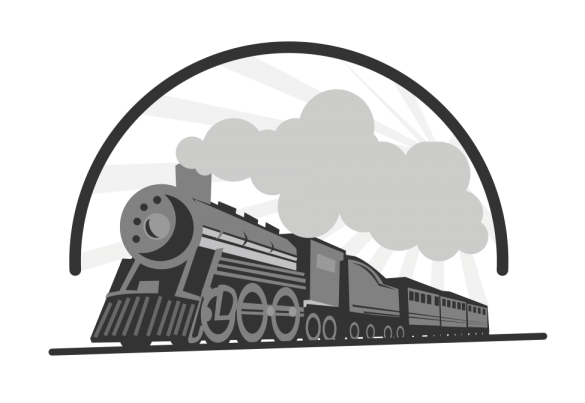 Our T-TRAK Story
Our T-TRAK Story
Instead of simply building a programming track for DCC, we’re going to build a 48″ x 14″ T-TRAK module that connects to one side of the railroad. There are multiple reasons for doing this, but primarily it is to create a multi-dimensional programming environment.
By creating a T-TRAK module that is long enough to truly program locomotives for DCC operation, we can also test any number of other processes – scenery, electrical conductivity, switching, accessory uses, and much more.
A further benefit includes the ability to take part of the “layout” to a local or distant model railroad meet, and to show off some of the capabilities of the overall layout (Fallen Flags). Sharing our work with others is a big part of what we are interested in.
And one last and intriguing thought: How about the creation of multiple T-Trak modules, which may be swapped, as needed to the overall layout. Some possible options might include:
- Locomotive Facility
- Larger Switching Yard
- Los Angeles Union Station
- Los Angeles Hobart Yard Annex
- Downtown Toy District
- Portland Union Station
- Major Industry (Tank Farm, Cattle Farm, Lumber Yard, ect.)
For those of you unfamiliar with T-TRAK, this is from the T-TRAK.ORG website:
What is t-trak?
T-TRAK is a modular model railroad system based on a few standards for module size, track placement, track interface, and electrical connections. The minimal standards allow for a wide range of flexibility in design yet still maintain interoperability with all modules built per the standards. The popularity of T-TRAK is worldwide allowing for modules from all over the world to connect together.
T-TRAK modules are dioramas with sectional track, specifically Kato Unitrack, that snap together to create layouts from a simple circle to large complex layouts. The modules are designed to fit on tables but could just as easily be setup on any flat surface from the floor (yes, around the Christmas tree) to taller benchwork. Layouts are easy to assemble and even easier to disassemble for those that do not have permanent space for a layout. The convenient size of the modules make them easy to store on a shelf or in totes when not in use, or to transport should the need arise. T-TRAK is the logical next step in model railroading.
T-TRAK Standards
 One of the beautiful aspects of T-TRAK is the simplicity of the specifications. In actuality, there are very few “formal” specifications for a T-TRAK module. If those few specifications are followed, all T-TRAK modules are compatible with each other. Also, most, but not all T-TRAK modules are built to N-Scale specifications. The following paragraphs will discuss N-Scale T-TRAK dimensions but a table for other scales is provided at the bottom of this page. In order to begin the conversation on standards some definitions must be established. The “length or width” of the module is the axis parallel to the track. The terms length and width are used interchangeably in T-TRAK. The “depth” of the module is the dimension perpendicular to the track and is the distance from the front (nearest the track) of the module to the back. The “height” of the module is measured from the bottom of the module to the base of the track.
One of the beautiful aspects of T-TRAK is the simplicity of the specifications. In actuality, there are very few “formal” specifications for a T-TRAK module. If those few specifications are followed, all T-TRAK modules are compatible with each other. Also, most, but not all T-TRAK modules are built to N-Scale specifications. The following paragraphs will discuss N-Scale T-TRAK dimensions but a table for other scales is provided at the bottom of this page. In order to begin the conversation on standards some definitions must be established. The “length or width” of the module is the axis parallel to the track. The terms length and width are used interchangeably in T-TRAK. The “depth” of the module is the dimension perpendicular to the track and is the distance from the front (nearest the track) of the module to the back. The “height” of the module is measured from the bottom of the module to the base of the track.
T-TRAK RESOURCES
There are a number of resources available to anyone interested in developing a T-TRAK module of their own. Some of those resources include:

